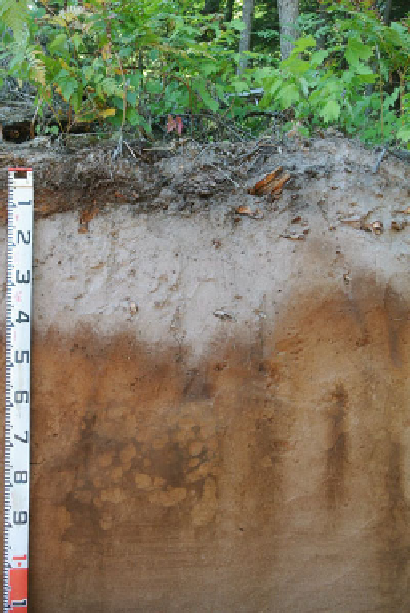Geoscience Reference
In-Depth Information
Fig. 22.1 A Typic
Haplorthod with a spodic
horizon (Photograph by
J. Bockheim)
the Upper Peninsula of MI. The spodic horizon shows Fe-rich colors and streaks of
dark brown to black Bh material. Data for seven soil series in common Spodosol
locations are given in Table
22.1
. Shown in boldface at the bottom of the table, the
spodic horizons average 29 cm thickness, have a bulk density of only 0.87 g/cm
3
because of illuvial humus material, have a mean concentration of 2.9 % SOC, and a
pH of 4.8. The spodic horizons average 79 % Al saturation of exchange sites and
have a mean base saturation of only 3 %. A comparison of mean values of
extractable Fe, Al, and the ODOE for the albic and spodic horizons shows clearly
the required accumulation of illuvial humus and Fe and Al sesquioxides.
22.3 Classification of Soils with a Spodic Horizon
Soils in the Spodosol order or in spodic subgroups of other orders represent five
orders, ten suborders, 24 great groups, 85 subgroups, and 696 soil series (Table
22.2
).
There is a common belief that most soils with a spodic horizon are in sandy or
sandy-skeletal particle-size classes. However, the NRCS data suggest that 41 % of
the soils are sandy and 40 % are in loamy classes (includes coarse-loamy, fine-loamy,

Search WWH ::

Custom Search